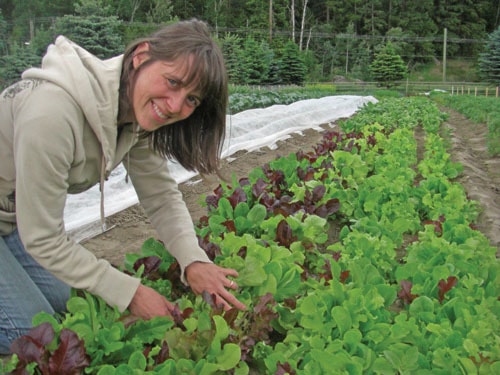The shiny red tomato might be branded with a ‘local’ sticker, but that doesn’t necessarily mean it was grown anywhere near where you live. In fact, it might have come from Alberta – or, perhaps, Fort St. John.
With a new definition put forward in May by the Canadian Food Inspection Agency, the word ‘local’ has expanded its horizons.
Under its previous policy, the CFIA interpreted the terms ‘local,’ ‘locally grown,’ or any similar term to mean that: the food originated within a 50-kilometre radius of the place where it was sold or, the food sold originated within the same municipality or adjacent government unit.
In CFIA’s new interim policy, ‘local’ expands to: food produced in the province or territory in which it is sold, or food sold across provincial borders within 50 kilometres of the originating province or territory.
The expanded definition of local is not being embraced by all.
Jen Gamble with Shuswap Food Action, an organization that promotes a sustainable local food system, said it makes no sense to her.
“It’s almost a move that makes the word ‘local’ mean less. It also points to the fact consumers have to be more educated about what they’re buying.”
She said Shuswap Food Action has always worked on the general rule that a 45-minute drive from your home is local to you.
This new policy, she says, adds to the confusion for consumers and doesn’t serve the small producers. She said consumers shopping in bigger retail chains, in particular, may want to buy local, but don’t have time to do the research.
She said if she was going to speculate on the reason for the change, it could be that the bigger interests are seeing ‘local’ as a valuable word. Or, perhaps, the new definition cuts down on the CFIA’s enforcement expenses.
Gamble urges people to contact CFIA, which states it will be consulting with consumers and industry on this and other labelling issues.
“One thing that I could potentially see as a benefit is it might spur on local groups to create local brands and increase activity of local producers within the region. It might make them mad enough to take some action.”
She adds that Shuswap residents are good at supporting local growers. “I’m not sure this will change that. If anything, I would hope this will be a wake-up call to more residents and it will actually get better.”
At DeMille’s Farm Market, owner Brad DeMille said he thinks the new definition makes ‘local’ meaningless. To him, he says, he considers that local goes about as far as Vernon. DeMille’s already does some site-specific labelling, he said, which he’ll increase now so that customers know more about which town and which farm has produced the food.
He said a lobby group of the large producers could certainly be pressuring the CFIA to change the rules.
In response to questions from the Observer, a CFIA spokesperson provided reasons for the change in an email:
“In Canada, food production and distribution has become increasingly large-scale and centralized. The previous policy was considered by some as too restrictive considering that many consumers now live in cities that are quite a distance from farmland. Their view of what they consider ‘local’ food is now broader,” wrote Elena Koutsavakis.
“The CFIA wants to strike the right balance for industry and consumers. As a result, the CFIA has chosen to adopt an interim policy that provides sufficient flexibility to industry while enabling consumers to make an informed choice.”
David Askew, owner of Askew’s Foods, said his store considers the Shuswap/Thompson/Okanagan valleys as local.
He finds the new CFIA definition so broad that it dilutes the concept.
“It seems to me it’s kind of driven by the bigger chains who want to be able to say stuff is local. A narrower definition of local is more difficult for them. To me it indicates the whole concept of local is catching on.”
He said Askew’s has already been doing more labelling of its local products.
“A lot of our customers are certainly interested in where things are grown and where they’re produced.”
